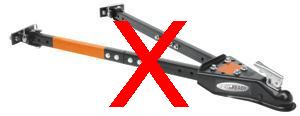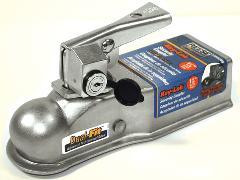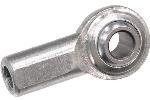The MGA With An Attitude
TOW BAR For Your Little British Car - TH-210
The problem with commercial tow bars is that they are all in a flat plane and never have
 any fixtures that can attach directly to your car. The first suggestion is, if you only need to move the car once, call for a flat-bed tow truck, or rent a tow dolly. Otherwise, ....
any fixtures that can attach directly to your car. The first suggestion is, if you only need to move the car once, call for a flat-bed tow truck, or rent a tow dolly. Otherwise, ....
Yes it can be done. I have built a few tow bars. I do not have off-the-shelf purchase information for a tow bar for any specific model of car. But I do have some general information that applies to tow bar for almost any car.
A lot depends on how often you intend to tow the car, how far and how fast. For a single short tow at low speed you can get away with a lot of slightly hokey pokey design and construction work. If you intend to take it any distance on the highway at normal road speeds, you can't cheat. The tow bar must be substantial, and the attachment to the towed vehicle must be solid. The front bumper is generally not a good towing attachment (although it has been used for some commercial rental tow bars when the bumper assembly is complete and wholly in tact). This may work on chrome bumper cars, but almost never for rubber bumper cars. As such, it is getting progressively more difficult to find this type tow bar at a rental shop.
Good attachment point will be around the front frame or sub-frame, near where the front suspension is attached. For some (not all) cars it may be possible to make attachment in front of the radiator by reaching the tow bar through the open grille space. More often it is better to reach underneath the front bumper and body valance to find solid purchase point. The connection point needs to be hinged on a transverse horizontal axis. Front end of the tow bar will have a ball connector (spherical ball joint for all direction motion). The ball joint will ideally be equal in height to the attachment point on the towed vehicle, so the tow bar is essentially level (in static state). This is necessary to eliminate change of length with vertical motion. As such, the ball mounting bracket on the tow vehicle may need an offset bracket to hold the ball relatively close to the road (similar to the typical sports car frame height).

If you want the tow bar assembly to be "collapsible" for compact storage, the design and construction gets relatively complex and heavier (and more expensive). If you can settle for a fixed shape static tow bar that will not fold up for storage, it gets much simpler, easier, lighter, and less expensive to build. Considering that form follows function, the simplest form will be a large "A" shape with the hitch ball at the apex and hinge pins at the bottom ends. Tension pulling is easy. Compression loading when you hit the brakes is a tougher issue. Angle iron is often seen in tow bars as a matter of ease of construction for a foldable unit, using clevis pins or bolts for pivot points. For a static unit (fixed shape, non-folding) round tubing (pipe) or square tubing is better to handle the compression load without buckling.
The front end ball coupling is a standard part, easily available for not much money, at auto parts stores and maybe even Walmart or Harbor Freight. Back end of the typical ball coupling will be a squared off inverted "U" shape, suitable for bolting up or welding angle iron or channel iron or welding in round tubing. Back end couplings may be a fabricated clevis or flat plate (if the towed vehicle has a flat plate or clevis respectively), to be easily connected with clevis pins. If you don't mind wrenching two bolts, the back end coupling could be a purchased Heim Joint to mate to a flat plate on the car with a single bolt on each side.


If I ever build another tow bar I will post design details. Otherwise feel free to submit photos and information about any tow bar you may have built or used for a vintage car.
|